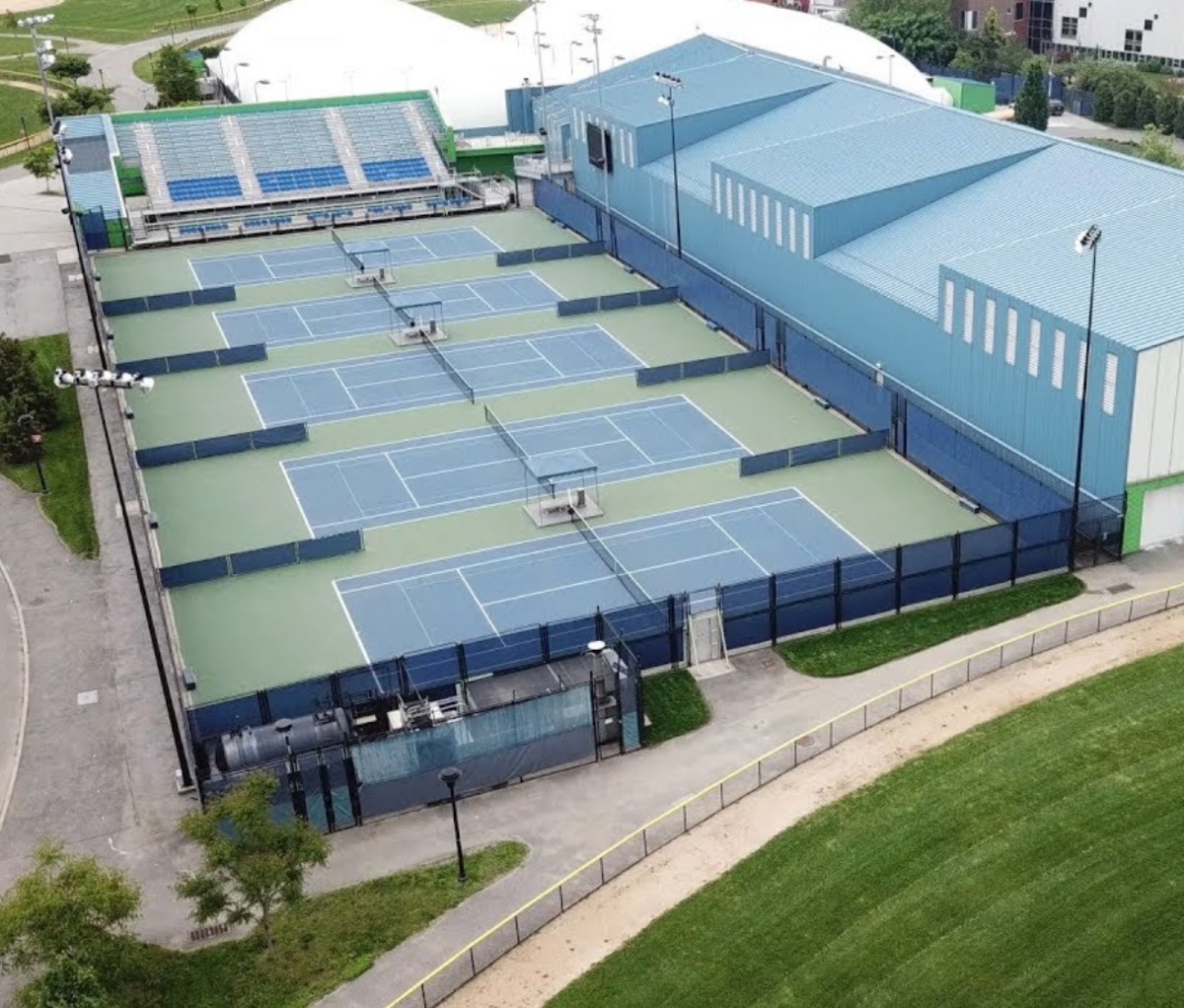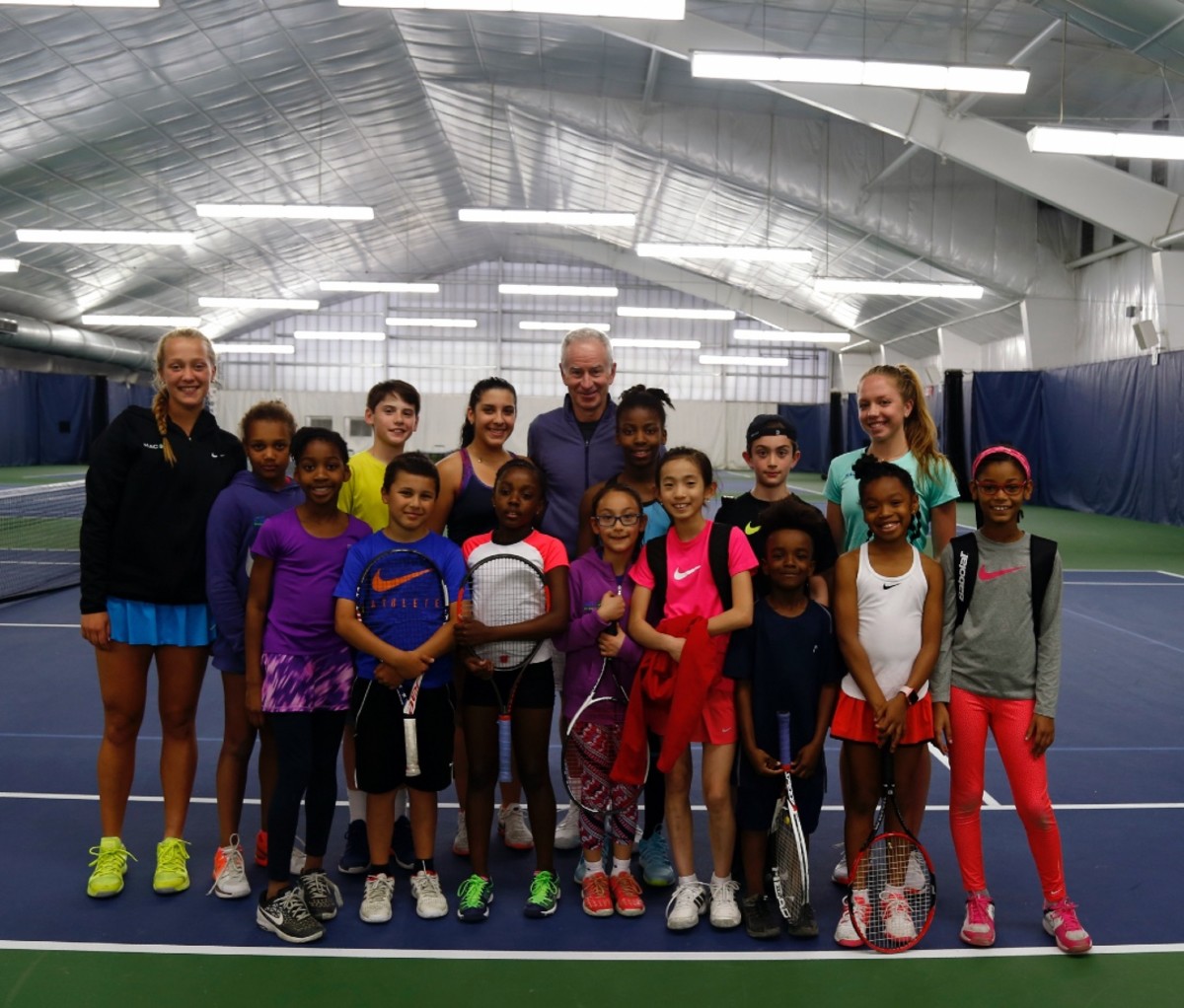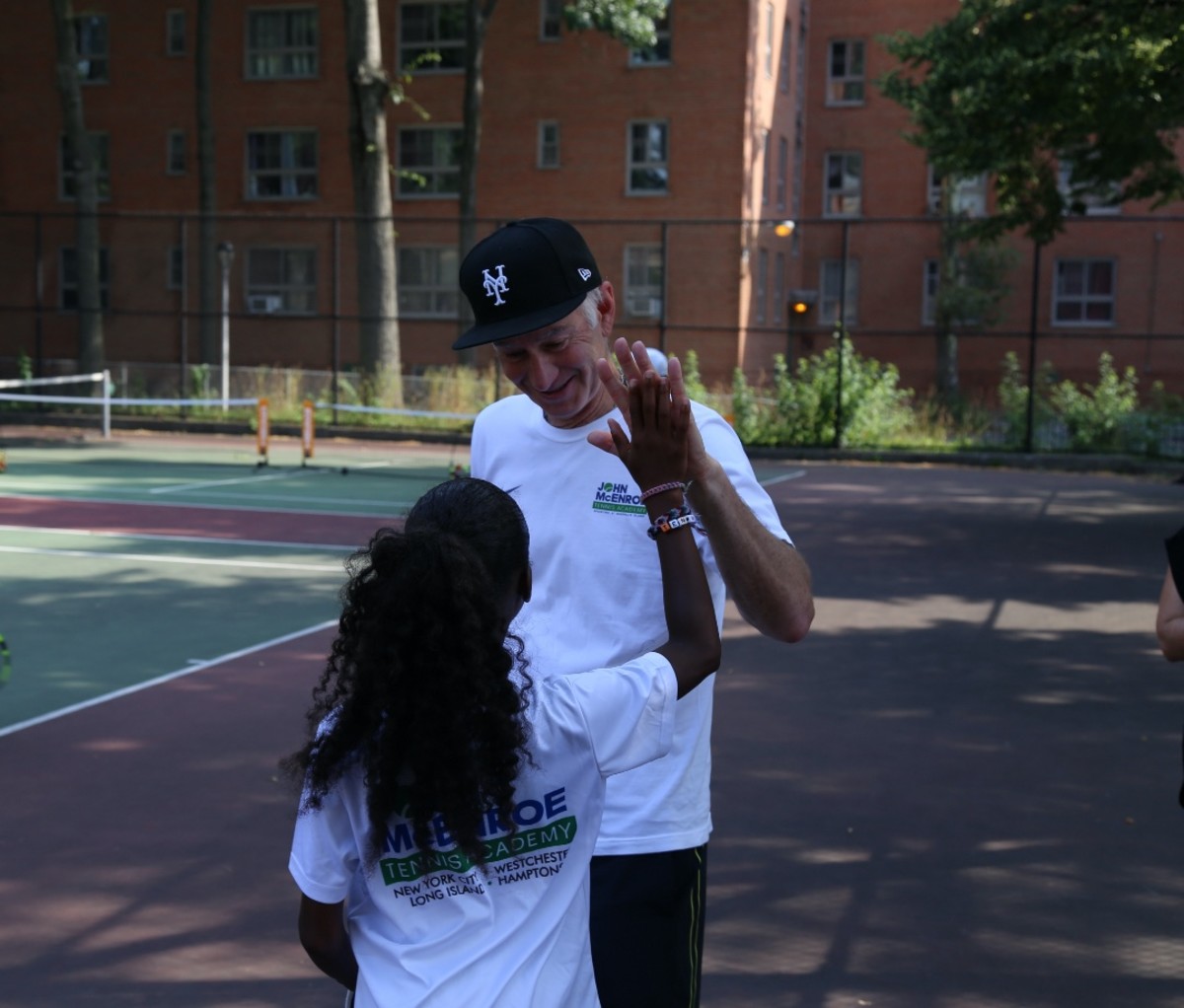Some guys of my generation dreamed of marrying actress Bo Derek or forming a famous rock band. Not me. As a high school tennis coach and passionate club player during tennis legend John McEnroe’s glory days, I often mused over what it must be like to play on the same court with someone of his renowned stature. I wondered if being near that level of excellence had a tactical feeling—if being close to him would raise the hair on my arm like static electricity radiating off an old CRT television screen. I had witnessed his artistry on the court from the nosebleed section at the US Open, but now I was about to bare witness up close and personal.
All sorts of questions swirled through my head as I made the two-hour drive to the John McEnroe Tennis Academy at SPORTIME Randall’s Island—mainly, Would I even be able to rally with him? I figured the ball would come off his racket with a much greater velocity than it did from the players at my local club. Obviously, none of them had ever won 77 singles titles including seven Grand Slams, nor were they ranked No.1 in the world four straight years.

Granted, this wasn’t going to be an actual match. I knew that would be cruel and unusual punishment. No, this would simply be two guys hitting balls back and forth with one being light years above the other in terms of talent. Regardless, I approached the academy with one goal in mind: Not to make a complete fool out of myself.
Nestled on an island in the middle of the New York City boroughs, the academy is a grandiose complex that boasts 20 courts. McEnroe, who was raised in Queens, participated in a variety of activities on the island as a kid.
It’s one thing to have a famous name attached to a facility. It’s quite another when that famous name actually puts his heart and soul into making that facility one of the best of its kind.
People who bring their kids to the academy, such as David Barrett, producer of TV’s hit show Bluebloods, rave about the facility. “The pros here are the best in the business,” Barrett said. “Their love of the game, along with John McEnroe’s presence, is quite infectious and makes you excited for the sport. Also, the diversity of the kids makes this such a nice and inviting place.”

Diversity is the major theme here. The Johnny Mac Tennis Project changes young lives by removing the racial, economic, and social barriers to success through tennis. A nonprofit, the project introduces tennis to under-resourced children, particularly those living in East Harlem and the South Bronx, two communities adjacent to the facility. Although the academy would love to produce a Wimbledon champion, the overall goal is to give kids some hope of rising from a bleak situation.
“In many respects, tennis still has a country club stigma attached to it and we’re trying to make it more accessible for everyone,” McEnroe explains. “We’re focusing on people who can’t afford to play, and it can sometimes be an uphill battle. It’s important because kids can change because of sports. It gives them an opportunity to blow off steam, but there are many young kids who are not given the same opportunity as others. Let’s make things fair for everyone.”
To date the project has reached almost 6,000 students through community projects and has awarded $6.5 million in scholarships and community programs.
“New York is an expensive place to be, thus the need to fundraise is on a continual basis,” he says.
At 61, McEnroe hasn’t lost his competitive spirit and his peak physical condition allows him to go head to head with other former champions on the senior circuit who are a decade or two younger. He worked with a physical trainer for 15 years, but now mainly relies on his personal regimen, working out six days a week; three or four of those are spent on the court, while the others are spent weight training, jumping rope, or mountain biking. “I’ll also walk about five miles while playing golf,” he says. “I enjoy having a routine and like to feel that I’ve accomplished something every day.”

Standing 5’11” and weighing 165 pounds, he’s a perpetual ball of motion while holding a conversation off the court. His overactive metabolism allows him to eat pretty much anything he desires while still maintaining his slim, wiry physique.
Jay Karl, McEnroe’s affable right-hand man at the academy and purveyor of guest services, set aside a court for us and the moment of truth had arrived. Honestly, it was surreal looking across the net at McEnroe, but once the rallies began I got lost in the moment and muscle memory took over. His crisp, penetrating shots were hit with pinpoint accuracy, but thankfully he directed most in my vicinity. When he wanted to end the rally, he effortlessly pulled me off the court with a heavy topspin and came to the net for one of his trademark volleys. Because he takes the ball so early, his shots are much harder to anticipate than anything I had experienced playing at the club level for 40 years.
Our session lasted 25 minutes, undoubtedly the most memorable time I’ll ever spend on a tennis court. After, he graciously remarked, “You get a lot of balls back.” Surely he was being kind, but I beamed nonetheless.
Playing with McEnroe was indeed a special and rare opportunity that’s afforded to few people. And even if my friends’ fantasy of marrying Bo Derek will never be realized, at least I can say my dream came to fruition—and boy was it sweet.
from Men's Journal https://ift.tt/2RLL9L0
via IFTTT












0 comments:
Post a Comment